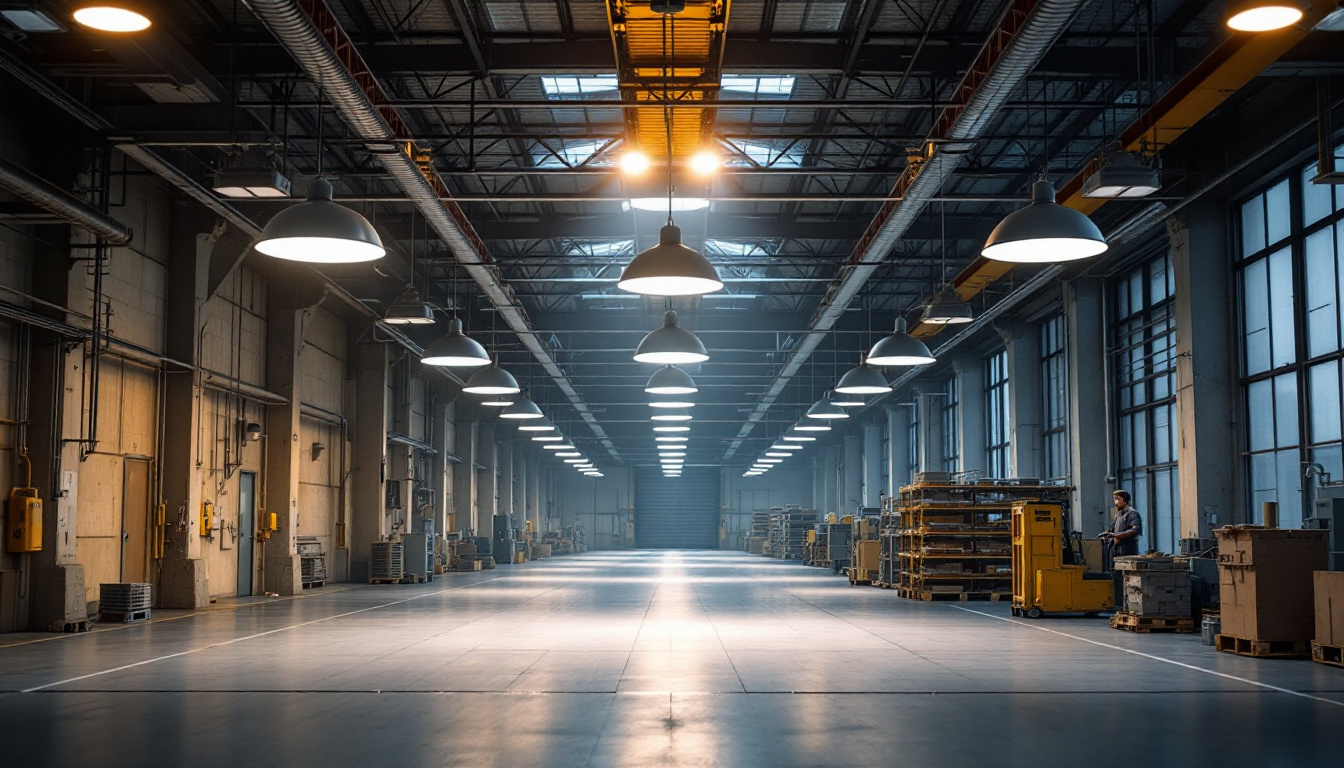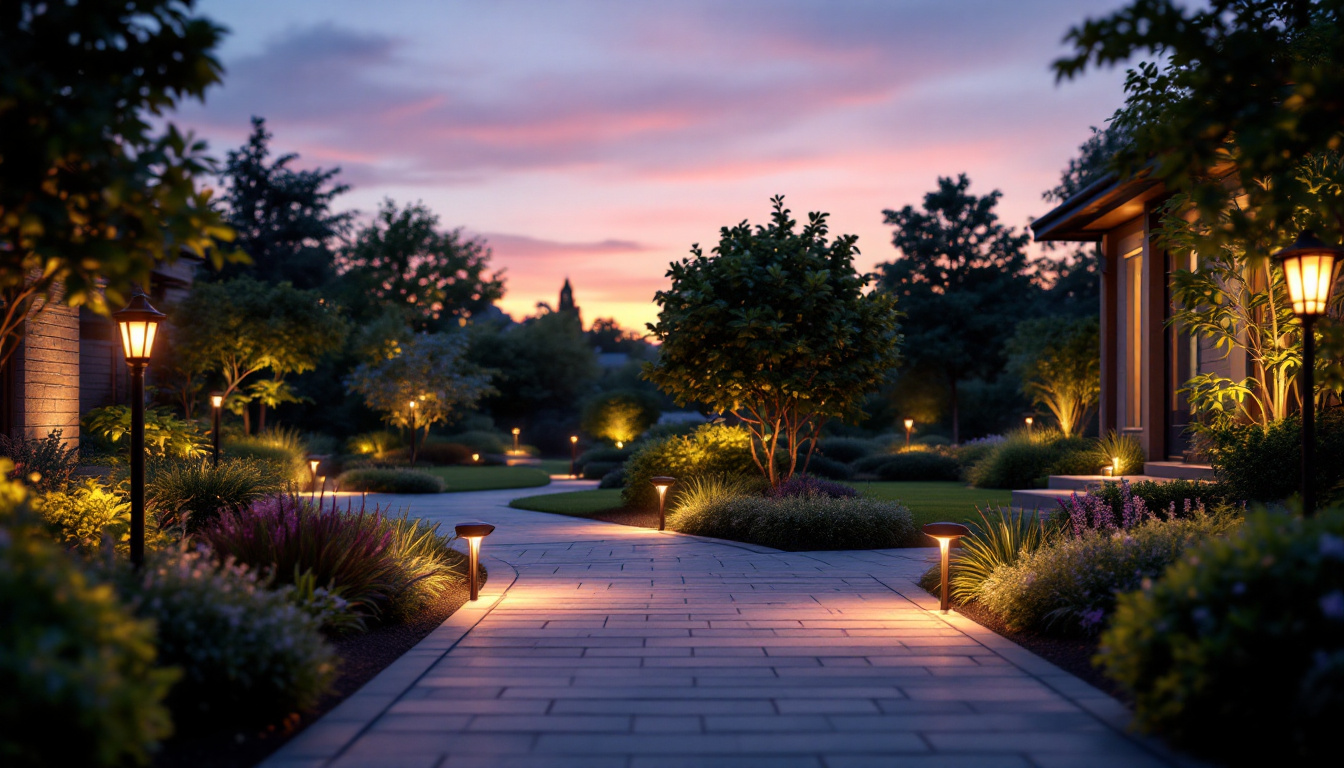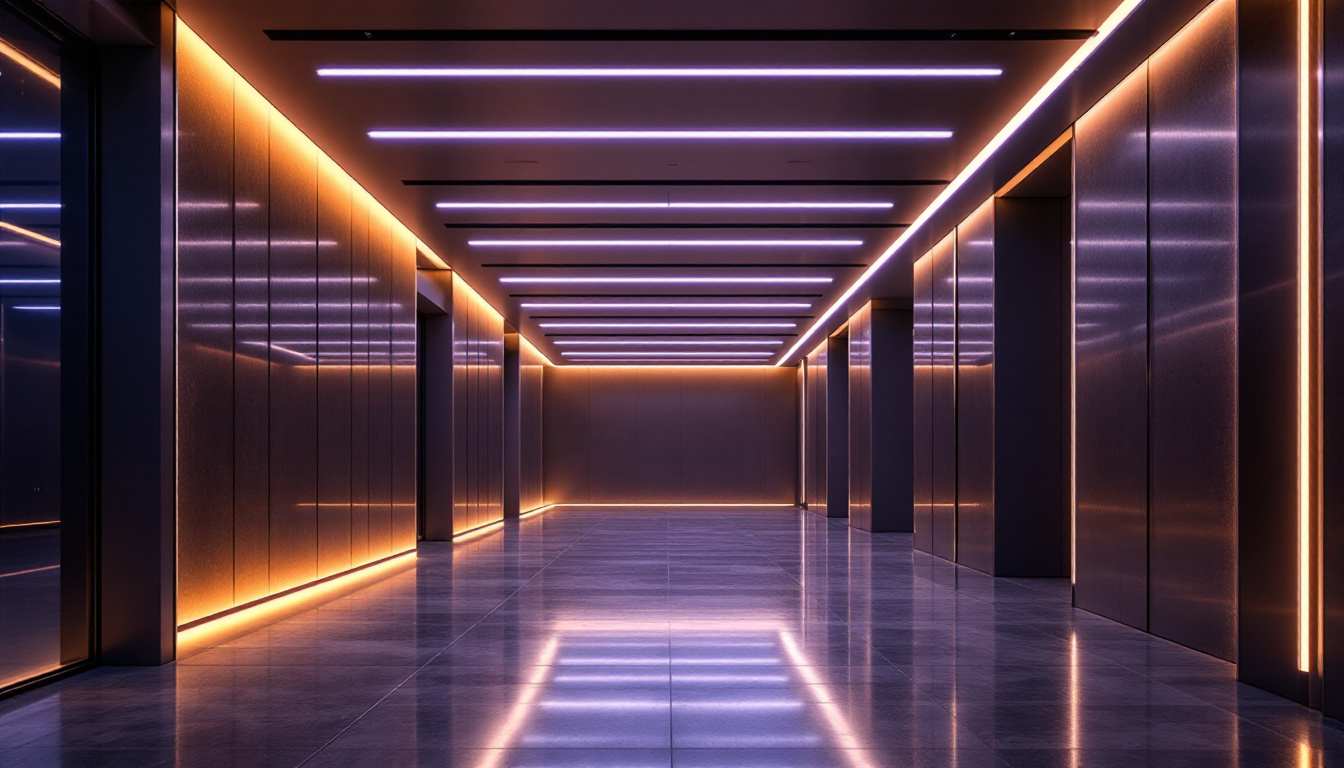

High bay lighting is essential for various industrial and commercial applications, providing adequate illumination in spaces with high ceilings. Effective lighting design not only enhances visibility but also contributes to safety and productivity. However, lighting contractors often encounter pitfalls that can compromise the effectiveness of their designs. This article explores common mistakes made in high bay lighting design, offering insights into how to avoid them for optimal results.
One of the most significant mistakes contractors make is failing to consider the specific ceiling height and layout of the space. High bay lighting is designed for ceilings typically above 15 feet, but the exact height can vary widely. Ignoring this factor can lead to inadequate lighting levels or excessive glare. For example, in a warehouse setting, the ceiling height can influence not just the type of fixtures used but also their positioning to ensure optimal light distribution across the floor area.
Contractors should conduct a thorough assessment of the space, taking measurements and noting any obstructions that may affect light distribution. Understanding the layout, including the placement of machinery, shelving, and workstations, is crucial for effective light placement. Additionally, the shape of the room, whether it is rectangular or square, can impact how light is reflected and diffused. Factors such as wall color and surface texture also play a role, as lighter surfaces tend to reflect light better, enhancing overall illumination.
Each application has different lighting requirements, and overlooking these can lead to insufficient illumination. For instance, warehouses may require different light levels compared to manufacturing facilities or retail spaces. Contractors must familiarize themselves with the recommended foot-candle levels for various tasks and ensure that the selected fixtures meet these requirements. In environments where precision is key, such as assembly lines or laboratories, the need for higher light levels becomes even more critical to ensure safety and efficiency.
Utilizing photometric data can assist in predicting how light will perform in the space. This data helps in making informed decisions about the type and number of fixtures needed to achieve the desired light levels. Moreover, understanding the concept of uniformity is essential; uneven lighting can create shadows and dark spots that may hinder productivity and safety. By evaluating the light distribution patterns, contractors can strategically place fixtures to minimize these issues, ensuring a well-lit environment that enhances both functionality and comfort for the workers.
Another common mistake is selecting fixtures that do not suit the specific needs of the environment. Factors such as lumen output, beam angle, and color temperature play a vital role in the effectiveness of high bay lighting. For example, using fixtures with a narrow beam angle in a wide-open space can result in uneven lighting and dark spots. This not only affects visibility but can also impact safety and productivity in work environments, where proper illumination is essential for tasks that require precision.
Contractors should consider the specific tasks performed in the area when choosing fixtures. For instance, areas requiring high visibility may benefit from high-lumen output fixtures, while spaces focused on ambiance might require softer lighting. Understanding the application is key to making the right choice. Additionally, it is important to take into account the height of the ceilings and the layout of the space, as these factors can influence how light is distributed. An effective lighting design may involve a combination of different fixture types to create layers of light, enhancing both functionality and aesthetic appeal.
Energy efficiency is a crucial consideration in lighting design that is often overlooked. Selecting fixtures with higher wattage may seem like a straightforward solution to achieving brighter spaces, but it can lead to increased energy costs and reduced sustainability. Modern high bay fixtures, such as LED options, offer significant energy savings while providing adequate illumination. These fixtures not only consume less power but also generate less heat, which can contribute to lower cooling costs in large spaces.
Contractors should prioritize energy-efficient solutions that not only reduce operational costs but also align with sustainability goals. This includes evaluating the lifespan of fixtures and their maintenance requirements, as longer-lasting options can further enhance cost-effectiveness. Moreover, integrating smart lighting controls can optimize energy use by adjusting brightness based on occupancy and natural light levels. Such systems not only enhance energy savings but also improve the overall user experience by ensuring that spaces are lit only when needed, thus promoting a more sustainable approach to lighting design.
Even with the right fixtures, improper placement can lead to ineffective lighting. Contractors often make the mistake of spacing fixtures too far apart, resulting in uneven light distribution. This can create areas of excessive brightness and others that are poorly lit, which can be hazardous in work environments.
To avoid this, a systematic approach to fixture placement should be employed. Using lighting design software can help visualize how light will spread across the space, allowing for adjustments before installation. This proactive measure ensures that all areas receive adequate illumination.
Light loss factors, such as dirt accumulation on fixtures or the aging of bulbs, are often neglected in the design process. Over time, these factors can significantly reduce the amount of light reaching the work surface. Contractors should factor in these losses when calculating the required lumen output for the fixtures.
Implementing a maintenance schedule can help mitigate light loss issues. Regular cleaning and timely replacement of bulbs will ensure that the lighting system continues to perform at its best, maintaining safety and productivity in the workspace.
Control systems play a vital role in modern lighting design, yet many contractors overlook their importance. Dimming capabilities and occupancy sensors can enhance energy efficiency and provide flexibility in lighting levels based on specific tasks or occupancy. Ignoring these options can lead to wasted energy and reduced user comfort.
Contractors should consider the integration of smart lighting controls that allow for easy adjustments and automation. This not only improves energy efficiency but also enhances the user experience by providing tailored lighting solutions for different activities.
Even the best-designed lighting systems can fall short if users do not understand how to operate them effectively. Contractors often neglect to provide adequate training on the use of control systems, leading to suboptimal performance. Providing comprehensive user training ensures that occupants can maximize the benefits of the lighting system.
Incorporating user feedback into the design process can also help identify potential issues and improve the overall effectiveness of the lighting solution. Engaging with users fosters a collaborative environment that can lead to better outcomes.
While functionality is crucial in high bay lighting design, aesthetics should not be ignored. A well-designed lighting system can enhance the overall look of a space, contributing to a positive atmosphere. Contractors often make the mistake of prioritizing performance over appearance, resulting in a stark and uninviting environment.
Incorporating design elements that complement the architecture of the space can create a more cohesive look. This includes considering fixture styles, colors, and finishes that align with the overall design vision. Aesthetic considerations can significantly impact employee morale and customer perceptions.
The color and quality of light can greatly influence the ambiance of a space. Contractors sometimes overlook the importance of color temperature, which can affect how colors are perceived and impact mood. For instance, cooler color temperatures may be suitable for industrial settings, while warmer tones can create a more inviting atmosphere in retail environments.
Understanding the psychological effects of light can help contractors make informed decisions about color temperature and quality. Evaluating the specific needs of the space and its occupants will lead to a more effective lighting design that promotes well-being and productivity.
The lighting industry is continually evolving, with new technologies and trends emerging regularly. Contractors who do not stay updated with these advancements risk falling behind and providing outdated solutions. For example, advancements in LED technology have led to improved efficiency and versatility, which can significantly enhance high bay lighting designs.
Engaging in continuous education, attending industry conferences, and participating in training programs can help contractors stay informed about the latest developments. This knowledge enables them to offer clients the best possible solutions, ensuring they remain competitive in the market.
Every client has unique requirements and preferences, and failing to adapt designs accordingly can lead to dissatisfaction. Contractors must actively listen to client feedback and be willing to make adjustments to meet their specific needs. This adaptability not only enhances client satisfaction but also fosters long-term relationships.
By maintaining open communication and being receptive to changes, contractors can create tailored lighting solutions that align with client expectations and project goals. This client-centric approach is essential for success in the lighting industry.
Avoiding common mistakes in high bay lighting design is crucial for lighting contractors aiming to deliver effective and efficient solutions. By understanding the space requirements, selecting the right fixtures, ensuring proper layout and spacing, and incorporating control systems, contractors can create lighting designs that meet the needs of their clients.
Moreover, considering aesthetic elements, staying updated with industry trends, and adapting to client needs will further enhance the quality of lighting projects. By prioritizing these aspects, contractors can improve their designs, ensuring safety, productivity, and satisfaction in every installation.
In the competitive field of lighting design, attention to detail and a commitment to excellence will set contractors apart, leading to successful projects and satisfied clients.
Ready to elevate your high bay lighting designs and avoid common pitfalls? Choose LumenWholesale for your lighting needs and experience the difference quality makes. Our spec-grade lighting products offer the reliability and performance you need to ensure your projects shine. With unbeatable wholesale prices and the convenience of free shipping on bulk orders, you can trust that you’re getting the best value without any hidden costs. Don’t compromise on quality or affordability—visit LumenWholesale today and discover the perfect blend of quality, affordability, and convenience for your next lighting project.

Discover essential insights for lighting contractors on LED light bulbs, including energy efficiency, installation tips, and the latest technological advancements.

Discover essential insights into outdoor flood lights that every lighting contractor should know.

Discover the essential insights every lighting contractor needs to master recessed lighting.

Discover the essential insights lighting contractors need to master architectural linear lights.
Get notified when NEW deals are released.
Optimize your budget with wholesale discounts.
Only top-quality, specification-grade lighting products.
No additional costs at checkout - what you see is what you pay.
We understand the unique needs of contractors.